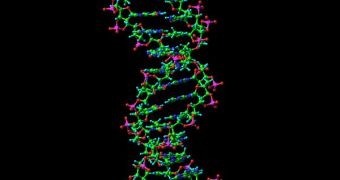Gene therapy is one of the most promising forms of treatment out there today, and experts hope that it may one day be used against a large variety of diseases, from cancer to AIDS. But there are still numerous problems associated with it that need to be dealt with first. One such issue is understanding exactly the role that junk DNA plays in the body. Scientists at the University of Edinburgh have taken a major step in this direction, when they have identified a protein that enables sections of this type of DNA to be cut and pasted within a genetic code.
Junk DNA is the current term given to portions of a DNA sequence in a chromosome or a genome for which no function has been identified to date. A large percentage of the human genetic material is currently labeled with this term, although some criticize its use. At one point, about 95 percent of this material was called junk DNA, though that percentage then fell to 80 percent, and continues to decrease. Some say that the genetic material is a remnant we no longer need, while others believe that it remains stored in the body to be used sometime in the future.
“By forming a picture of the enzyme that causes DNA to shift, and discovering how this works, we understand more about how these proteins could be adapted and controlled. This may one day enable genes to be pasted into cells exactly where they are needed – which could be of enormous benefit in developing gene therapies,” UE School of Biological Sciences Professor Dr. Julia Richardson, who has also been the leader of the new investigation, explains. The study was funded by the Wellcome Trust and the Medical Research Council, and appears in the latest tissue of the scientific journal Cell.
Cutting DNA sequences and pasting them where they are needed inside the ailing genome may become one of the most important tools of gene therapy in the future. At this point, delivery systems, and the genes themselves, work rather chaotically, but that could change in a few years' time, the experts say. Hereditary diseases could become a thing of the past if this line of research is successful, as would cancer too. The genes responsible for the damage would be removed and replaced with healthy ones, set in the exact position their disease predecessors occupied, e! Science News reports.

 14 DAY TRIAL //
14 DAY TRIAL //